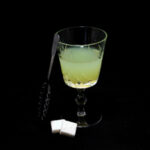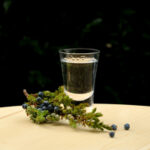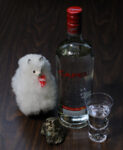Absinthe 
“It was a milky yellow now with the water and he hoped the gipsy would not take more than a swallow. There was very little left and one cup of it took the place of the evening papers, of all the old evenings in cafes, of all chestnut trees that would be in bloom now in this month, of the great slow horses of the outer boulevards, of book shops, of kiosks, and of galleries, of the Parc Montsouris, of the Stade Buffalo, and of the Butte Chaumont, of the Guaranty Trust Company and the lie de la Cite, of Foyot’s old hotel, and of being able to read and relax in the evening; of all the things he had enjoyed and forgotten and that came back to him when he tasted that opaque, bitter, tongue-numbing, brain- warming, stomach-warming, idea-changing liquid alchemy.”
For whom the bell tolls
Ernest Hemingway
On March
Continue reading Absinthe
Introduction to Spirits 
Cognac, tequila, gin, vodka, whisky, rum…. an entire selection of bottles of various shapes and colors that rest on shelves behind the barman and that are generally called spirits. The common property of all spirits is relatively high alcohol content that’s usually achieved by distillation.
Let’s talk about spirits in general: about their origins, history, technology and the basis of their variety.
Continue reading Introduction to Spirits
Cognac
It is time to talk about cognac.
Technically, cognac is a brandy (a spirit made by wine distillation) produced in French region Cognac according to the Appellation d’Origine Contrôlée rules (about EU and French wine laws read here and here ). However, cognac is not just brandy with geographical identification, it is the name, the history, the pride, and the worldwide recognition of France (and its income source, more than 90% of cognac production is exported, and every second, five bottles of cognac are sold in the world).
Continue reading Cognac
Gin 
Gin is a strong alcoholic drink made from distilled spirit by re-distillation with aromatic botanicals, the most important of which is juniper.
Continue reading Gin
Pisco 
Recollections of my recent trip to South America bring to mind pisco, the renowned spirit of Peru and Chile. For a refresher on spirits and the distillation process, you can refer to my article Introduction to Spirits. An overview of South American viniculture is also available here.
Pisco is a type of brandy produced by both Chile and Peru, and it has been the subject of international disputes between these two countries.
In South America, viticulture began with Spanish colonists and their grapes in the mid-16th century. The continent boasts numerous regions conducive to winemaking, and with the experience brought by many colonists, winemaking began to thrive.
Peru’s wine production quickly reached such a scale that it began exporting wine back to Spain, prompting protests from Spanish wine sellers and attempts by the Crown to halt the exports.
However, the desire for spirits persisted. Imported brandy from Spain was prohibitively expensive,
Continue reading Pisco
|



